How Do You Know What Type of Ammunition Your Firearm Uses?
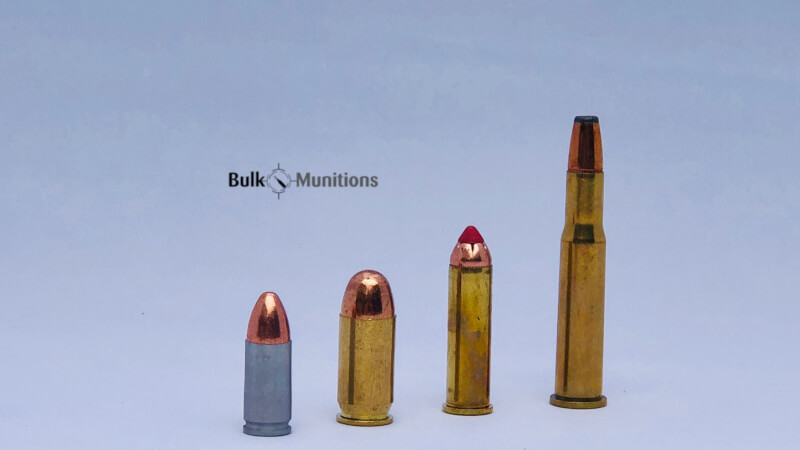
Let us help you learn about one of the foundations of shooting – the basic parts of ammunition. Without information technology, your firearm is cipher more than than a behemothic paperweight. In the following paragraphs, nosotros will discuss what armament is, dispel some of the misinformation surroundings it, and fifty-fifty give you some basic knowledge related to armament and normally associated terms. And then, what are the basic parts of ammunition?
At outset glance, the earth of guns and armament tin seem like a lot to have in. This is particularly truthful when it comes to terminology.
Have you ever been corrected, or heard it happen to someone else, later on referring to a magazine equally a clip, or a semi-automated burglarize chosen an assault weapon? Side by side time you visit the local gun shop walk up to the counter and inquire what bullets would be best for deer hunting and run into what happens. Chances are your answer volition include a strange combination of stares, wide optics, and even some outright hostility.
If yous are going to participate in any activity it is important to learn the proper terminology (i.east. the basic parts of ammunition), doing so allows you to exist understood by other members of the community and even taken more seriously.
Shooting is no different.
Whether y'all are protecting your home, striking targets, or hunting it is of import to know and use terminology correctly.
Today, we'll pause down the different components of ammunition so that next time you lot are at the gun shop buying supplies, or at the range discussing your progress, others know what yous are talking about and do non look at you similar yous are describing an alien landing.
Whether it is a result of poorly written Hollywood scripts, unknowing television news reporters, or simple misunderstanding in that location is no escaping the fact that when it comes to firearms many people use incorrect terminology.
This often leads to individuals using the correct terminology to depict something wrongly or interchange it. 1 of the most mutual mistakes occurs when describing ammunition; which is often referred to equally bullets, shells, or brass.
Making this common error is a ruby-red flag that tells those invested in shooting and guns that there is a lack of understanding or the possibility you have ever shot a firearm.
Of course, firearm terminology is not a knowledge someone is built-in with, nor is information technology necessary to succeed in the modern world. It is non taught in schoolhouse or generally office of a casual chat.
In other words, information technology needs to exist learned past those wishing to partake in shooting or knowledgeably hash out with experts in the field. As shooters, if we want others to utilise the correct terminology, we demand to do two things: first, use it correctly ourselves, and 2d, share that cognition with others. Here we will talk over the right terminology when it comes to ammunition (including the bones parts of armament). Nosotros break down what each office does and acceptable slang or alternative terms for each.
Is it a cartridge, bullet or ammo?
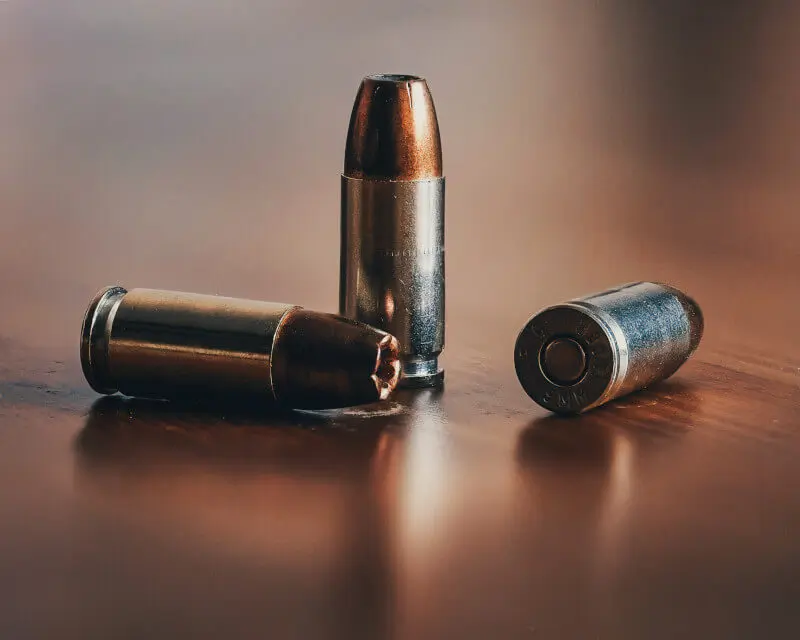
Ammunition, or ammo for brusk, is the correct term for the material or projectile expelled by any weapon. If you happen to be using a firearm your ammunition will consist of properly sized cartridges that expel a bullet. However, a crossbow will utilize a bolt, a slingshot a rock or brawl bearing and a catapult… well, annihilation that will fit into the basket.
The correct term for a firearm's ammunition is a cartridge, although adequate slang terms include round or loud. This cartridge is a pre-assembled ready-to-use type of ammunition designed for mod firearms. Although the term bullet is commonly used to describe a cartridge information technology is not an authentic replacement for the correct term equally the bullet is but one component of the overall cartridge. It is like using the term roof to describe a business firm or engine to describe an automobile.
So, your burglarize needs ammunition to function properly and that armament is referred to equally a cartridge. That same rifle may fire a bullet, but it is loaded with cartridges, rounds or loads of which the bullet is but i component. If you are buying bullets you lot will only receive that unmarried component, the projectile, which is simply necessary if you are involved in reloading. If you demand ready to use armament you volition purchase cartridges, or ammunition, of the appropriate size.
A round is a single cartridge.
A shell is a type of ammunition fired by larger caliber weapons, usually a cannon or arms slice. These shells were originally solid pieces, relying on weight and kinetic strength to inflict damage. In the mid-19th century, explosives were added to shells and the high-explosive projectile was invented. This is at present the standard type of ammunition used in firearms today.
A shot refers to a unmarried firing of a weapons system. Depending on the specific weapons system this could event in the firing of 1 or more than cartridges and the subsequent release of a single or multiple projectiles. "Shot" is besides a term that is used to depict a type of ammunition that releases multiple projectiles from a single cartridge such as a shotshell or cluster ammunition.
Bones components of an ammo cartridge
So, at present that we understand the correct term for the ammunition used in your firearm is cartridge lets discuss what a cartridge consists of. Nearly modern cartridges consist of iv main components – the case, primer, propellant, and projectile.
A shotgun cartridge, more commonly referred to as a shell, consists of five components – the case, primer, propellant, projectile(s) and wad.
Allow'due south expect at each component of a round, how it functions, and options that may be available:
Cartridge/Casing
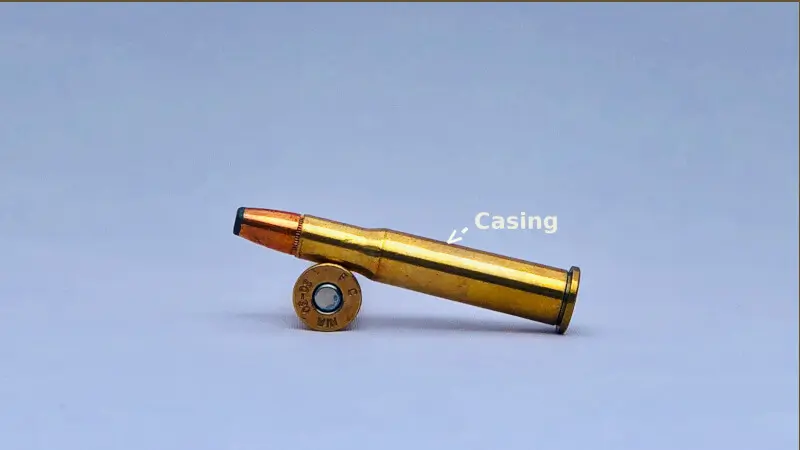
The casing is the container, or housing, into which all the other components fit. It is the chore of the case to hold the other 3 or 4 components in the correct position needed for proper operation.
Early firearms utilized casings constructed of paper, which were and then burned or discharged during the firing process.
Modern firearm cartridges utilize a example constructed of metal (brass, steel, copper or aluminum are most mutual) or plastic (most common in shotgun cartridges).
When selecting a cartridge for your firearm it is vital that yous ensure the case is the correct size for the sleeping room, otherwise you risk malfunction and fifty-fifty a unsafe explosion.
Although the instance is unremarkably referred to as "brass" this term merely applies to the expelled cases after they have been fired. Technically, the increased use of metals other than brass have made this slang inaccurate, however, it remains a unremarkably used and accepted term.
If you will be reloading you lot should stick with brass, contumely alloy or plated brass. Pure first run brass is best; still, recycled brass can exist used likewise. In fact, the highest quality brass casings can be reloaded as many equally vi or 7 times. Other forms of brass, including alloys or plated versions, can exist used but will take a much shorter life span.
Propellant
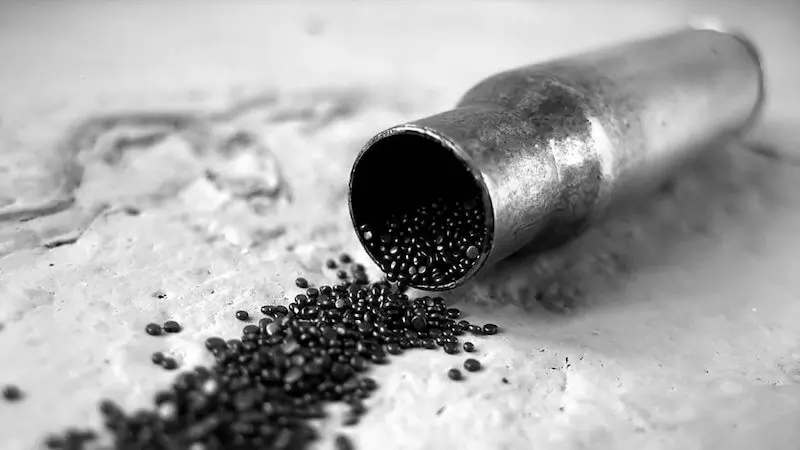
Early firearms relied on gunpowder, which is a specific combination of chemicals that burns apace and speedily creates expanding gases as it burns.
Developing the ability to confine and control the burning process and gas expansion was the central to developing reliable, and safety, firearms. Unfortunately, gunpowder is unstable and muddied, capable of exploding or burning easily if mishandled.
Due to its instability gunpowder has been replaced by modern chemical compounds that accomplish the same outcome without the danger. The most common of these combinations is saltpeter, sulfur, and charcoal. The issue is a propellant that burns fast, is reliable and more stable.
Primer
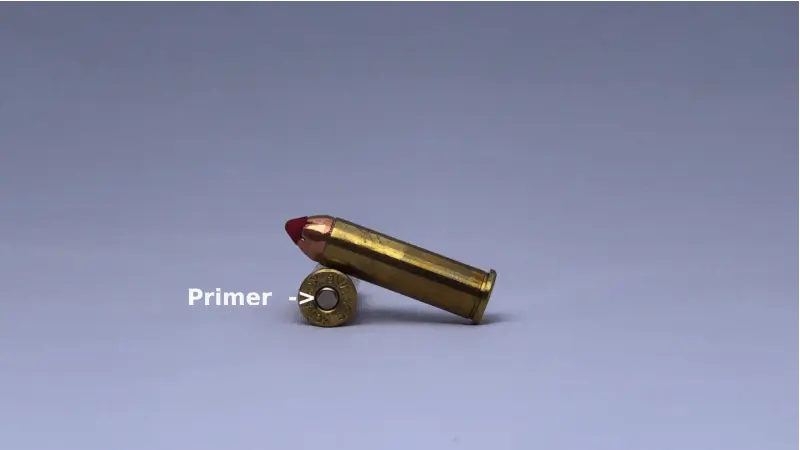
The propellant requires a smaller charge to be safely igniting and this is accomplished by the primer.
In modern cartridges, this primer is placed in the rear of the case, either in the rim or a small-cap located at the center, which is activated via a strike of the firing pin.
As is the instance with the propellant, gunpowder has been replaced past more stable mod chemical compounds in the construction of the primer.
Quality primers are essential to proper, reliable ammunition performance. A damaged or moisture primer will often result in failure to fire or a delayed, hang, burn state of affairs.
Projectile
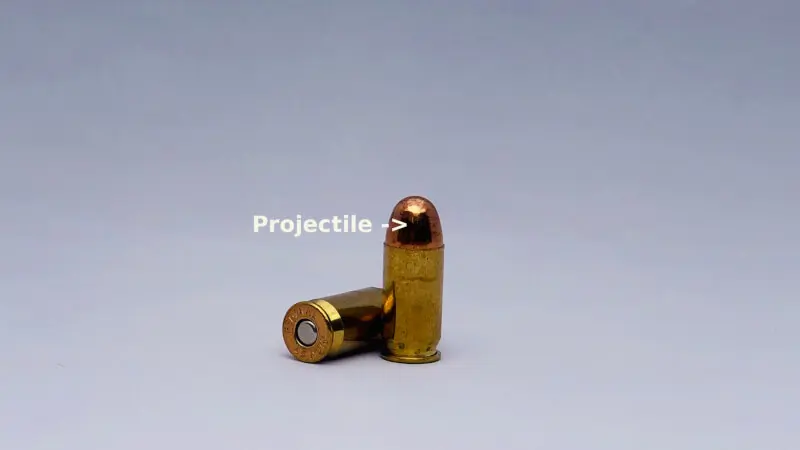
Every firearm requires an object that will exist expelled from the firearm which will, in plough, exist used to striking the intended target.
This object is called the projectile, although the terms bullet, slug or shot are often used in its place. In reality rifles & handguns fire bullets while shotguns fire slugs or shot, the latter being used to describe a group of pellets expelled from a single shell or casing.
Most projectiles are constructed of metal and consist of either lead, steel, tungsten, bismuth or combinations of these metals. Some manufacturers have even experimented with adding a polymer cone to hollow point designs. The result is controlled expansion and deeper penetration.
Bullets, which is an acceptable term for the projectile for virtually mod firearms, come in a variety of types. Each is designed for a dissimilar purpose and may or may not cycle properly in every firearm. Whether yous are a hunter interested in greater penetration, a target shooter looking for increased accuracy, or a pinker looking to salvage some money there is a design that is right for you. Some of the more than common types are listed below:
- Lead Circular Nose (LRN)
- Wad Cutter (WC)
- Semi-Wad Cutter (SWC)
- Semi-Jacketed (SJ)
- Full Metal Jacket (FMJ)
- Semi-jacketed Hollow Point (SJHP)
- Jacketed Hollow Betoken (JHP)
- Special (RCBD)
- Soft Betoken (SP)
- Armor Piercing
- Gunkhole Tail
- Boat Tail Hollow Betoken
Wad
Equally discussed earlier a shotgun cartridges includes a fifth component, the wad. The wad is a piece of plastic, or sometimes paper, inserted into the instance between the propellant and projectile. The purpose of the wad is to create a more airtight space in which the propellant' s gases can build when burned and to assist in propelling the projectiles in a uniform manner.
Putting the bones ammunition round all together
Unless you lot reload your own ammunition it may announced unnecessary to understand how the diverse bones parts of ammunition components fit together and work in harmony. Even so, if you lot are determined to understand your sport, and be able to speak about it in an informed and accurate style, this increased knowledge volition allow you to do and then.
As discussed earlier, the example is the housing into which the other components are housed. In the case of centerfire cartridges (the almost common blazon of modernistic ammunition) the primer is fitted into a pocket in the base of operations of the case, the propellant is packed into the hollow interior space and a projectile (aka bullet) is secured into the open stop. In the case of shotgun cartridges, the wad is placed betwixt the propellant and the projectile(s).
When the trigger is pulled the hammer hits or releases the firing pin. The firing pin, in plough, moved chop-chop forward and strikes the primer. Once struck by the firing pin the primer ignites and most immediately ignites the propellant by allowing a flame to enter the cartridge via a pocket-size hole behind the primer cap.
This results in an instantaneous chemical reaction that creates expanding gases which, due to the confined space within the case, cause the projectile to be rapidly expelled. Once expelled from the case the projectile travels down the simply path available to it – the firearm's barrel.
In single activity, double action and semi-automatic firearms this cycle repeats each time the trigger is pulled, although each has a different sequence of steps required to allow the trigger to rest between shots. An automatic weapons system will continue to fire, repeating the above cycle uninterrupted until the trigger is released, or the ammunition is exhausted.
Determination
There you take it, the master parts of ammunition in a nutshell (or casing is you like). Remember, learning the right terminology will increment your shooting noesis. Whether information technology'southward buying 9mm ammo in bulk or just plinking the afternoon away with some cheap 22 LR.
Using right terminology will permit yous to exist taken seriously by other shooters. Adjacent time yous are at the gun shop look effectually and see what is available, ask questions to learn what is new and what might work well in your firearm. Or, yous know, buy ammo online and larn most the rounds from expertly written descriptions.
Of course, every firearm owner has a responsibility to read the owner'south transmission and practice safe shooting.
Before you know it, you will be the one others come up to for information, waiting patiently while you shoot then they tin can enquire "Is it a bullet, ammunition, or cartridge?"
youngannexclock51.blogspot.com
Source: https://bulkmunitions.com/what-are-the-parts-of-ammunition/
0 Response to "How Do You Know What Type of Ammunition Your Firearm Uses?"
Post a Comment